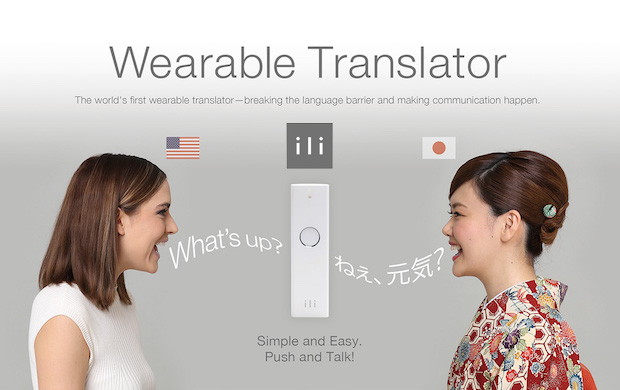As a marketer, topics about how to introduce a new product to the market interest me. Recently there has been a lot of discussion about a device called ili that is a pretty advanced translator that doesn’t require an internet connection.
Most of the discussion has been over a specific video the company is using to promote the device. Buzzfeed called it “creepy”. and claimed it was sexual harassment?
But is this video really so wrong?
I’m going to take a devil’s advocate approach here.
Let’s actually explore the message in the commercial (which almost certainly uses actors) from the context of the producers of the device, rather than from the perspective of the typical tech savvy American Millennial who spends an above-average amount of time using the internet to communicate and views the socially normal behavior of a man flirting with women he just met as something disgusting or creepy.
I like to think brand agencies don’t invest lots of time and money into a product to send messages they think are not going to resonate, and there is some rational explanation behind the decisions they make.
The commercial showcases the ability for a much sought after universal translator to create connections between people which would otherwise never be possible. The commercial says, “How else can a non-Japanese speaking traveler be able to interact with, and potentially romance Japanese ladies, except by using a device like this?”
By demonstrating that once you remove the language barrier, even as complete strangers, people from entirely different cultures can get along so well they can even kiss, the manufacturer has showcased what kind of connections are possible if a person owns this device and how different our world can be if everyone uses one.
And indeed, if we can remove the language barrier between people are such connections not possible?
Some commentators to the video have suggested it propagates the stereotypical viewpoint of the white American man having a fetish for Asian women. Another, more rational way of looking at it is that Japanese and English are languages which could not be more different, and is one of the most difficult language barriers to cross. It takes many years of study for an English speaker to learn Japanese to the degree demonstrated in the video, and vice versa. By showing the device allowing an English speaker to flirt with and succeed at charming a Japanese speaker the manufacturers have shown the power of their device.
As for the subject matter, if you think of all the different situations a person would usually need a translator, these are not the most entertaining situations. it’s normally something like asking for directions or trying to conduct a business meeting. They are not the kind of situations that are going to interest millions of consumers. If your goal is to produce a device aimed at consumers then the kind of situation you want to show is one that has universal common ground and the outcome can be exciting; such as flirting with someone you’ve just met. Looked at from this context the commercial makes a lot of sense.
Let us also consider that this is a Japanese manufacturer. It is probably not lost on them that Japan has an incredibly low birth rate and this is causing Japan an economic crisis, which is no doubt created because not enough Japanese ladies are getting romanced. Although it may sound nuts, if you look at it from the perspective of businessmen facing an economic crisis caused by lack of romantic connections, it may not be too much of a stretch for the manufactures to hope that a flood of outgoing foreigners to come into Japan and believe that is what Japan needs.
What do you think? Let me know in the comments below.




